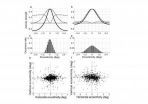(Press-News.org) AUGUSTA, Ga. – A common birth control device is effective in treating early-stage endometrial cancer in morbidly obese and high-risk surgery patients, said Georgia Health Sciences University Cancer Center researchers, and could lead to a cost-effective treatment for all women with this cancer type.
Endometrial cancer, which starts in the lining of the uterus, is the third most common gynecologic cancer, striking more than 47,000 American women every year, particularly the obese. "Total hysterectomy, sometimes with removal of lymph nodes, is the most common treatment for this type of cancer. But women who are morbidly obese or who have cardiac risk factors are not good candidates for surgery," said Dr. Sharad Ghamande, a gynecologic surgeon and oncologist at the GHSU Cancer Center, Chief of the Section of Gynecologic Oncology at the Medical College of Georgia, and principal investigator on the study.
For two years, Ghamande and his team followed a small group of high-risk patients with early-stage endometrioid adenocarcinoma, a common subtype of endometrial cancer, and those with atypical endometrial hyperplasia, or thickening of the uterine lining, which can lead to cancer. Patients were treated with an intrauterine device that releases the progestin levonorgestrel, successfully used for the past decade as a contraceptive.
The endometrial stripe, or thickness of the endometrium, was measured with transvaginal ultrasound before the study and at the three- and six-month marks. The stripe's progressive thinning at each stage demonstrated the effectiveness of the treatment. Subsequent endometrial biopsy found reversal of abnormal cell growth, known as neoplastic changes, in all patients.
Ghamande's group also analyzed 13 published studies and found a complete pathological response in 91.3 percent of cases, with no progression of disease, confirming their findings. The study also validated use of transvaginal ultrasound, commonly used to diagnose endometrial cancer, as a useful follow-up tool in assessing endometrial cancer treatment.
"Thirty to 35 percent of women with hyperplasia will go on to develop endometrial cancer, and in 30 percent of these cases, women will present with a co-existing cancer," said Ghamande. "Traditional treatments can result in postoperative complications and morbidity, not only in patients at high risk. But we may succeed in establishing a lower-risk and more cost-effective way of managing this cancer in all women."
"Identifying better treatments for cancer is the most important goal of our cancer research center," said Dr. Samir N. Khleif, Director of the GHSU Cancer Center. "Studies such as Dr. Ghamande's are changing the landscape of cancer care today, both here in Georgia and around the world."
Ghamande and Dr. Cinar Aksu, a GHSU Cancer Center fellow, presented the study results on Tuesday during the International Gynecological Cancer Society's 14th biennial meeting. Dr. Michael Mcfee, a gynecologic oncologist, and fellow Dr. Steve Bush, both of the GHSU Cancer Center, co-authored the study.
INFORMATION:
Common birth control device may be cost-effective treatment for early endometrial cancer
2012-10-17
ELSE PRESS RELEASES FROM THIS DATE:
Abnormal involuntary eye movements in amblyopia linked to changes in subcortical regions of brain
2012-10-17
Amsterdam, NL, October 16, 2012 – Little is known about oculomotor function in amblyopia, or "lazy eye," despite the special role of eye movements in vision. A group of scientists has discovered that abnormal visual processing and circuitry in the brain have an impact on fixational saccades (FSs), involuntary eye movements that occur during fixation and are important for the maintenance of vision. The results, which raise the question of whether the alterations in FS are the cause or the effect of amblyopia and have implications for amblyopia treatment, are available ...
Viral alliances overcoming plant defenses
2012-10-17
PULLMAN, Wash.— Washington State University researchers have found that viruses will join forces to overcome a plant's defenses and cause more severe infections.
"These findings have important implications in our ability to control these viruses", says Hanu Pappu, Sam Smith Distinguished Professor of Plant Virology and chair of WSU's Department of Plant Pathology. "Mixed infections are quite common in the field and now we know that viruses in these mixed infections are helping each other at the genetic level to overcome host defenses and possibly lead to the generation ...
New paper reveals fundamental chemistry of plasma/liquid interactions
2012-10-17
Though not often considered beyond the plasma television, small-scale microplasmas have great utility in a wide variety of applications. Recently, new developments have begun to capitalize on how these microplasmas interact with liquids in applications ranging from killing bacteria for sterilizing a surface to rapidly synthesizing nanoparticles.
An interdisciplinary collaboration between researchers at Case Western Reserve University and the University of Notre Dame has revealed a critical interaction that is occurring at this plasma-liquid interface in that the electrons ...
Immune response may link social rejection to later health outcomes
2012-10-17
No matter which way you look at it, rejection hurts. Experiencing rejection from a boss, a friend, or a partner is difficult enough for many adults to handle. But adolescents, who are dealing with the one-two punch of biological and social change, may be the most vulnerable to its negative effects.
In a new study published in Clinical Psychological Science, a journal of the Association for Psychological Science, researcher Michael Murphy and colleagues examine the human immune response as a potential link between social stressors like rejection and later mental and physical ...
Jelly-like atmospheric particles resist chemical aging
2012-10-17
Cambridge, Mass. - October 16, 2012 - Atmospheric chemists at the Harvard School of Engineering and Applied Sciences (SEAS) have found that when it comes to secondary organic material in the atmosphere, there are two distinct breeds: liquids and jellies.
Secondary organic materials (SOM) are airborne particles that have begun to react with gases in the atmosphere. In the last 20 years' research and climate modeling, these SOM particles have been assumed to drift as liquids. In a liquid phase, the organic materials would absorb other compounds like ammonia or ozone very ...
NASA: How do you solve a problem like (Tropical Storm) Maria?
2012-10-17
The song "How do you solve a problem like Maria?" from the famous film "The Sound of Music" comes to mind when looking at NASA satellite imagery of Tropical Storm Maria churning in the western North Pacific Ocean. The answer lies in increased wind shear and cool ocean temperatures – two factors that can weaken the storm, but won't be present over the next day or two.
NASA's Aqua satellite passed over Tropical Storm Maria on Oct. 16 at 0355 UTC, 12:55 p.m. local time Tokyo/Japan (Oct. 15 at 11:55 p.m. EDT) and the Moderate Resolution Imaging Spectroradiometer (MODIS) instrument ...
NASA sees Hurricane Paul 'eye' Mexico's Socorro Island, coastline
2012-10-17
NASA's Aqua satellite captured a stunning image of Hurricane Paul in the eastern Pacific Ocean that revealed Mexico's Socorro Island was just outside of Paul's eye. Now, Paul is expected to track along the Baja California coast, triggering more warnings.
Hurricane Paul is stirring up rough seas in the eastern Pacific Ocean and warnings are posted along Baja California.
A hurricane warning is in effect for the west coast of Baja California from Santa Fe northward to Punta Abreojos. A tropical storm warning is in effect for the west coast of Baja California north of Punta ...
Satellite sees large Hurricane Rafael battering Bermuda
2012-10-17
Hurricane Rafael is a large hurricane and Bermuda has battened down for Rafael's battering today, Oct. 16. NOAA's GOES-14 satellite revealed Rafael's large span that covers several hundred miles and dwarfs Bermuda.
NOAA's GOES-14 satellite captured a visible image of Tropical Storm Rafael in the Atlantic on Oct. 16 at 7:45 a.m. EDT. The image shows the extent of Hurricane Rafael, which is over 410 miles in diameter. That's longer than the distance between Boston and Washington, D.C. The visible image also showed a thick row of clouds northwest of Rafael. Those clouds ...
Cold viruses point the way to new cancer therapies
2012-10-17
VIDEO:
Dr. O'Shea discusses her research.
Click here for more information.
LA JOLLA, CA---- Cold viruses generally get a bad rap----which they've certainly earned----but new findings by a team of scientists at the Salk Institute for Biological Studies suggest that these viruses might also be a valuable ally in the fight against cancer.
Adenovirus, a type of cold virus, has developed molecular tools----proteins----that allow it to hijack a cell's molecular machinery, including ...
NASA sees rainfall pushed away from Tropical Storm Anais' center
2012-10-17
Satellite imagery from NASA's TRMM satellite showed that wind shear is pushing the bulk of rainfall away from the center of Tropical Storm Anais.
When NASA's Tropical Rainfall Measuring Mission (TRMM) satellite passed over Tropical Storm Anais on Oct. 16 at 0654 UTC (2:54 a.m. EDT), light to moderate rainfall was occurring southeast of the center and falling at a rate between .78 to 1.57 inches/20 to 40 mm per hour. The displacement of rainfall from around the storm's center to the southeast indicates moderate to strong northwesterly wind shear.There no areas of heavy ...







